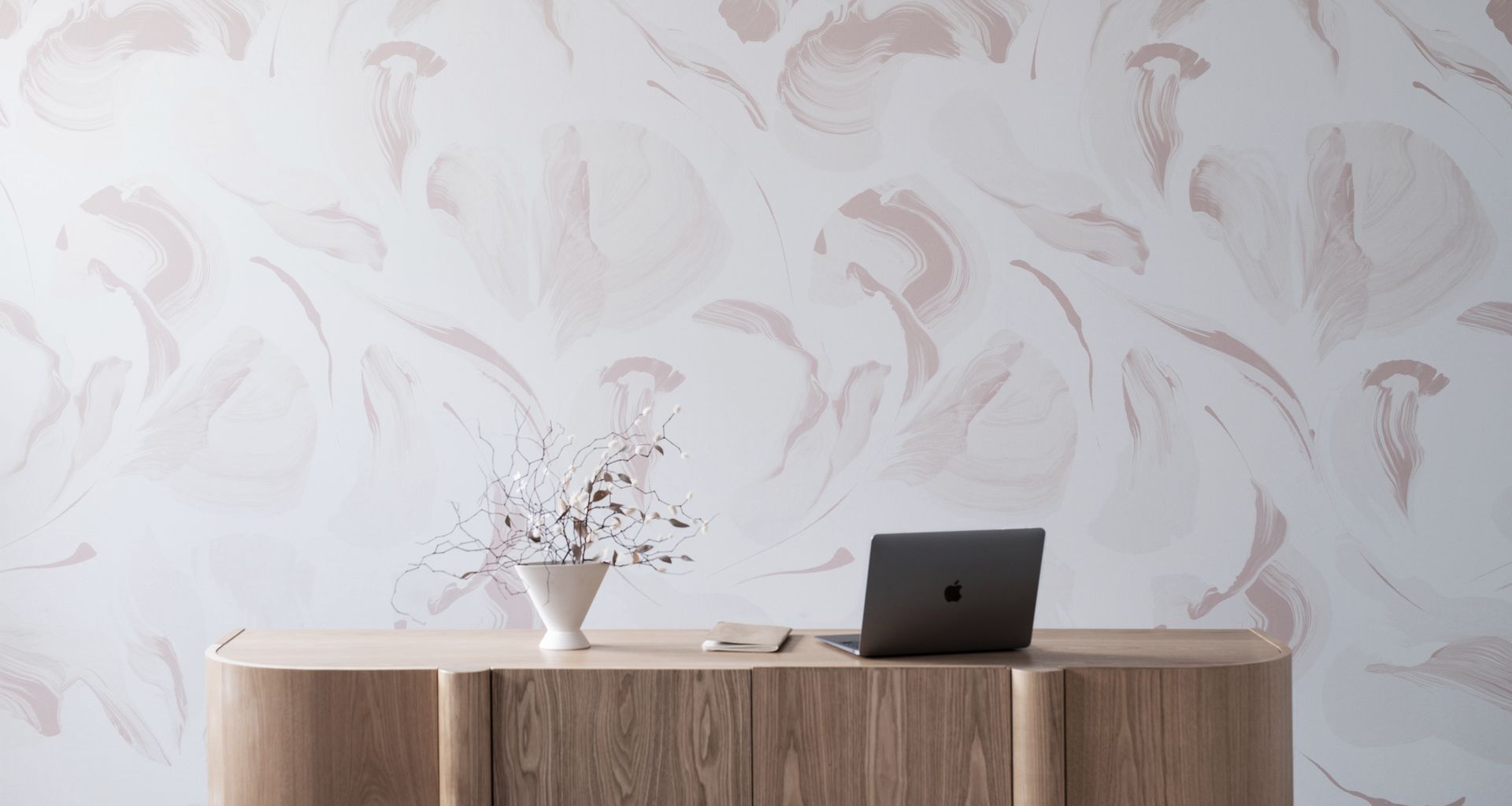The intersection of art and architecture in the workplace
Written by
11 December 2022
•
5 min read

Just as a curated home can benefit from an enriched atmosphere that can’t quite be achieved with architecture and furniture alone, there are many positives to incorporating art in the workplace.
What are the benefits of art in the workplace?
Not only does art boost the aesthetic of a space, it has also been found to have many benefits to employee wellbeing.
Making the transition from the home office to the workplace more comfortable, art can reduce stress levels – viewing artworks resembling nature, in particular, can help to restore mental energy and lower feelings of anger.
Conversation and connection can also be initiated by art.
“Art has the potential to shape and reshape experiences of a space and for the people who inhabit it. For me, this is where the power of art and design really comes together,” says Jessica Agoston-Cleary, co-founder and director of Artfull – a digital platform connecting artists with art collectors.
Art has the potential to shape and reshape experiences of a space and for the people who inhabit it.
Where art meets architecture
These benefits – and the direct impact that our everyday scenery has on our wellbeing – aren’t being dismissed in Aotearoa’s architectural landscape, with many workplaces now being transformed into spaces that borrow design elements from residential projects. Rather than being cold, brutalist environments, office design is now focused on ways to promote employee health and wellbeing – and, in turn, productivity.
So what does the intersection of art and architecture look like in the workplace and how is it achieved? This was the topic of discussion at a recent panel discussion hosted by Jessica Agoston-Cleary.
At the event, Zenith Interiors brand director, Matt Vescovo; senior associate and interior designer at Warren and Mahoney Architects, Keri Cunliffe; Auckland-based artist, Paul Nathan (also known as Bonco); and senior interior designer for Jasmax, Anna Manson, explored the ways art, architecture and design come together in commercial workspace environments to create places that not only function seamlessly but also enrich and inspire the people they’re created for.
How to introduce art to the workplace
There are many options when it comes to curating the modern workspace with art and often it is a collaboration between the client, architect and interior designer to find special pieces that complement the overall look and feel of the space.
“Typically, you would have a functional brief – those pragmatic aspects that the workplace needs to function,” explains designer Kerri Cunliffe, “and then you sometimes also end up with a creative brief. Both of those come from the client and they set the creative parameters that you can work to – the ultimate goal being to create something authentic for the client. Those parameters help create a unique outcome for each client.”
Be inspired by nature
Just as using the principles of biophilic design can evoke feelings of peace and wellbeing, the same effect can be achieved through the use of artworks that display patterns and scenes from nature.
Artistic acoustic panels
Combining form and function, many acoustic products available for offices and other commercial projects today come in a variety of colours, textures and finishes – from acoustic panels that double as artworks, to coloured acoustic tiles that can be arranged in custom configurations.
Visual branding
In both offices and customer-facing work environments, art can be used to represent a brand.
New Zealand Merino Company’s Christchurch workplace, for example, heroes wool. Brought to life by Gaze Commercial, the project features wool-covered walls and artworks made using the natural fibre – a fitting visual for the brand.
Murals
Whether used as a representation of your brand, or to simply bring a pop of colour to a social area of the office, wallpapers and custom murals take the incorporation of art in the workplace to another level.
The interpretation of art and architecture
Similar to architecture, art is unique and can be interpreted diversely.
“It’s often an unspoken conversation that happens between the viewer, or the person inhabiting the space, and the artwork in front of them,” says Jessica.
“Even with materiality there are so many hues that exist within concrete – is it purple or blue? We all have our own associations with what those are to us as individuals; there’s absolutely no way that we can predict what the person coming into that space or looking at that piece of art is going to bring with them when they stand before it.”
It’s often an unspoken conversation that happens between the viewer, or the person inhabiting the space, and the artwork in front of them.
Interior designer Anna Manson adds: “There’s something nice about the unexpected reveal or realisation at the end of a project when something’s in the space and it changes the space; and it’s not what you expected or there’s an element that you didn’t plan for. That’s something that I love about my job – I always enjoy at the end of the project seeing the space and reality of how all these things come together and make it unique.”
“At the end of the day, we are all concerned with making people’s lives better – better than they were when they woke up in the morning in some minute way. And art, I feel, has a particular way to do that,” says Jessica.
Explore wall decor and panels to incorporate in your next project.
Words by Cassie Birrer






